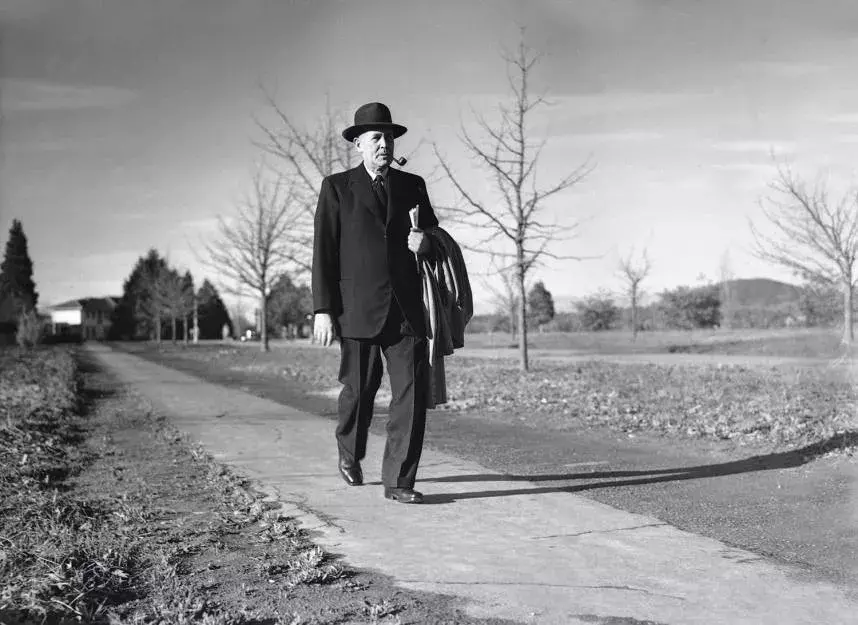BEN CHIFLEY
Member of the Privy Council (1945)
Ben Chifley became Australia's 16th prime minister after being elected leader of the Australian Labor Party, following the death of John Curtin earlier in July 1945.
22 September 1885
Bathurst, New South Wales
13 June 1951
Canberra, Australian Capital Territory
Elizabeth Chifley
Australian Labor Party
Photo: News Ltd/Newspix
About
Ben Chifley provided Australia with a reassuring figure in the immediate post-war reconstruction period. He had an unvarnished charm that allowed him to connect with ordinary people and world leaders alike. Herbert Coombs, his chief economic adviser, referred to Chifley’s homespun advice as ‘Chifforisms’.

Photo: News Ltd/Newspix
At an early age Chifley went to work as a labourer in primitive conditions on his grandfather’s farm and received only limited education. He joined the New South Wales Railways becoming the youngest engine driver in the state.
Chifley was active in his union, leading him to stand for the seat of Macquarie in 1925. He was unsuccessful, but stood again in 1928 and won. With the election of the Scullin Labor government he became Minister for Defence. Chifley lost his seat in the 1931 landslide loss that swept Scullin from office and he did not regain Macquarie until 1940.
Chifley was a capable administrator and planner who aimed to secure economic stability, full employment and social justice for his fellow Australians. Chifley lost the election in 1949 after misreading the mood of the electorate in relation to issues such as petrol rationing and bank nationalisation.
He stayed on as opposition leader and contested the 1951 election, which Labor lost. On 15 June 1951 he suffered a fatal heart attack. Chifley, along with John Curtin, remains a Labor Party hero for his embodiment of traditional party values.
MILESTONES
Commonwealth and State Housing Agreement Act
The Commonwealth and State Housing Agreement Act passed on 11 October 1945 provides for the subsidisation of house construction through the delivery of Commonwealth funding to match State grants.
Sir William McKell appointed as Governor-General
Sir William McKell takes office on 11 March 1947 after being appointed as only the second Australian born Governor General after Sir Isaac Isaacs.
Displaced persons taken into Australia
Australia signs an agreement with the United Nations Refugee Agency on 21 July 1947 which paves the way for displaced persons from war-ravaged Europe to be accepted into Australia. This marks the beginning of Australia's extensive post-war immigration program.
United Nations President elected
Australian Minister for External Affairs Dr Herbert Vere Evatt is elected as the inaugural President of the United Nations General Assembly on 21 September 1948.
Australia's own car
The first mass-produced family car the F J Holden rolls off the assembly line on 29 November 1948. Ten years later 500,000 Holden cars have been manufactured.
Australian Security Intelligence Organisation established
The Australian Security Intelligence Organisation is formed on 16 March 1949, during the increased tension of the Cold War, to protect Australia against acts of espionage, sabotage and foreign interference.
Snowy Mountains Hydro-Electric Scheme
Construction of the Snowy Mountains Hydro-Electric Scheme begins on 17 October 1949. It diverts water from a number of Australia's major river systems to provide irrigation and minimise the impact of droughts.
360° VIEW
Parliament
Chifley won the 1946 election with a comfortable majority in the House of Representatives and a landslide in the Senate. This favourable parliamentary situation allowed him virtually free reign to continue, as prime minister, the reformist economic and social legislative program that he had begun as treasurer in the Curtin government.
The vast numbers of returned servicemen were provided with access to preferential employment where available and, if not, to vocational training and tailored unemployment benefits. The Australian National University was established, followed by a university scholarships scheme. The Hospital Benefits Act was extended to provide the States with subsidies to provide free public ward treatment.
The Commonwealth Employment Service was created and an ambitious immigration program commenced. This provided workers for what was to become Australia’s largest construction project in the Snowy Mountains Hydro-Electric Scheme. The setbacks to Chifley’s legislative agenda mainly came from outside the Parliament, in the form of the High Court challenges to the banking controls and pharmaceutical benefits scheme proposals.

Photo: Fairfax

